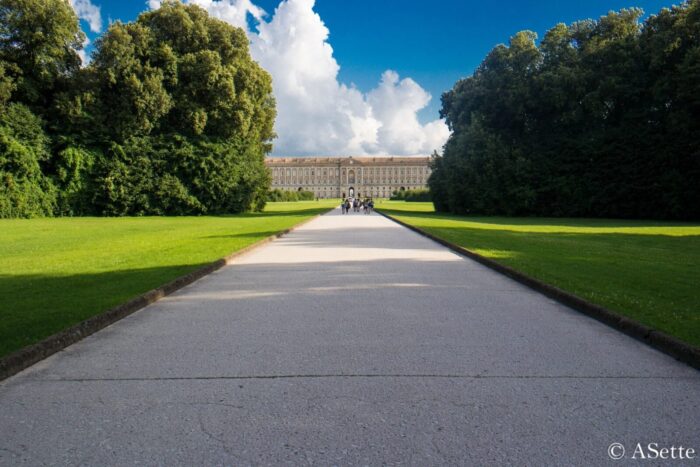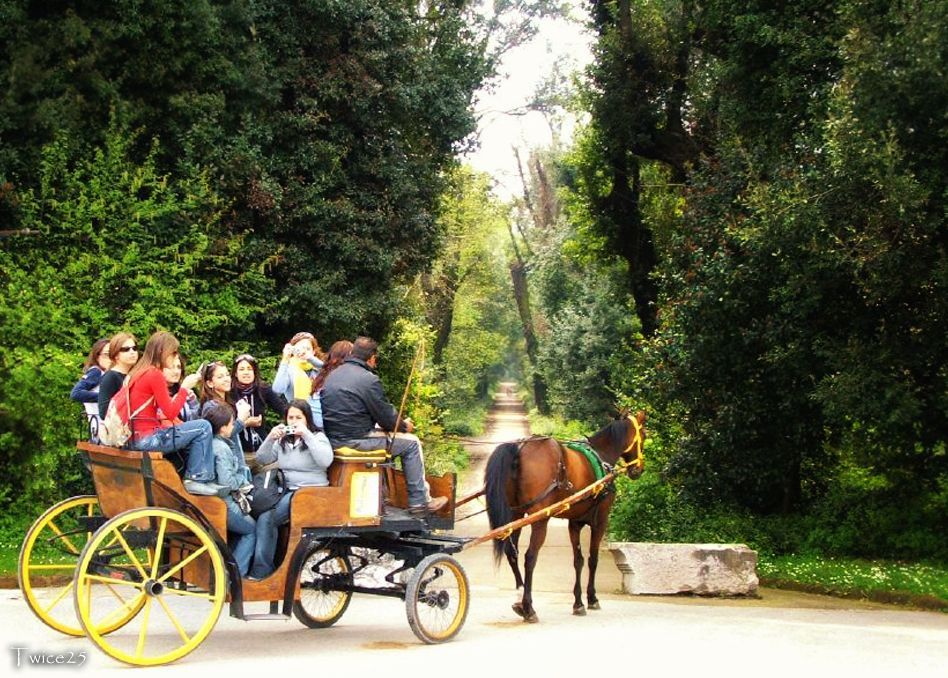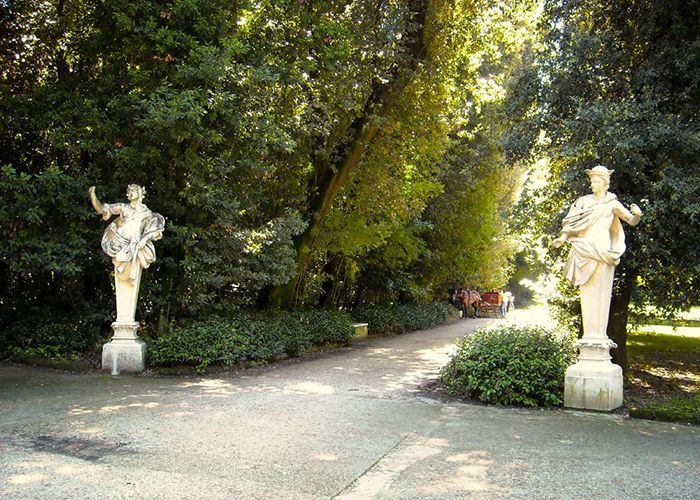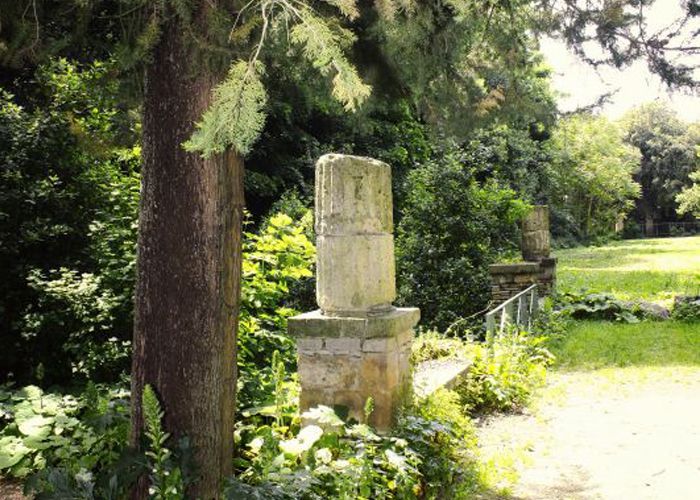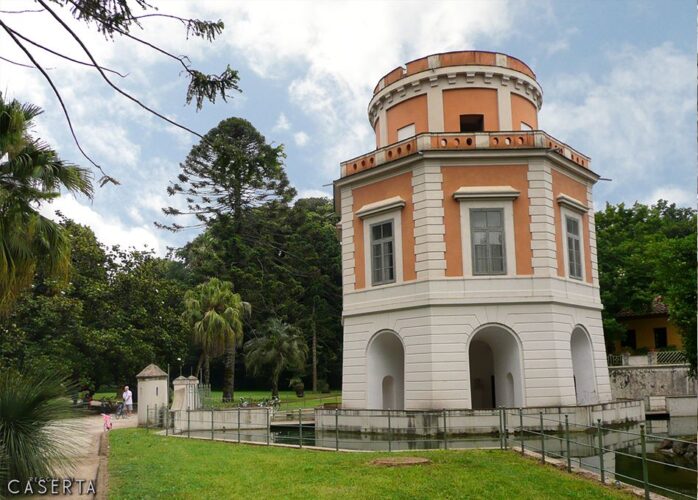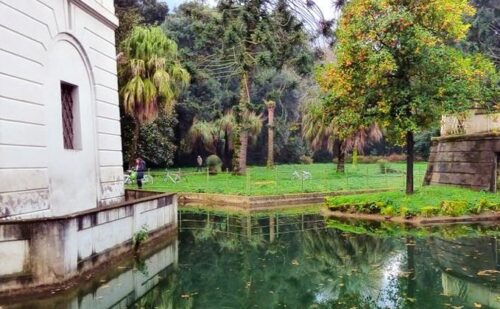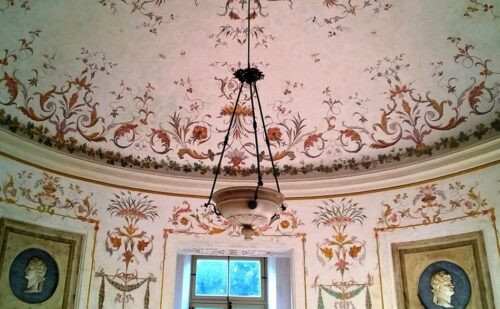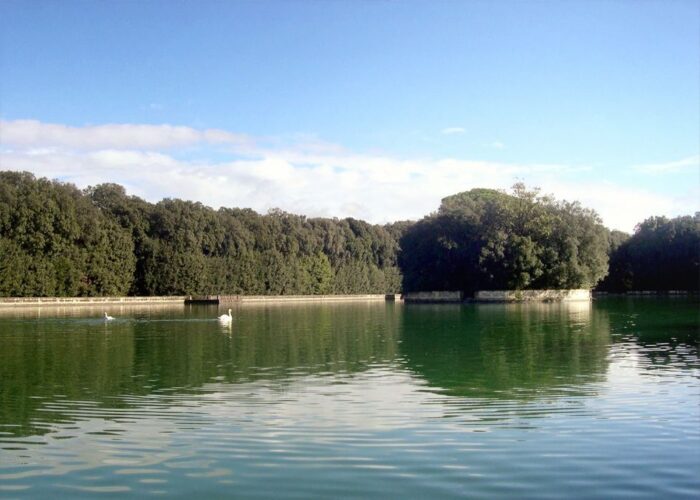The Parterre and the Old Woods
The Parterre and the ancient Acquaviva's Woods
THE PARTERRE
The parterre is the wide clearing you meet going out of the Palace main gallery. Its name comes from the French expression “par terre”, that means “on the ground”, since it had been designed following the French garden designs, with flowers representing fantastic weaves similar to coloured flower carpets. Vanvitelli could count on the cooperation of the French head gardener Martin Biancour. Because of a change in the design during the works, the flower beds described in the original design had been replaced by wide grasslands still present nowadays. In the middle of each flowerbed, in the first half of the XIX century, circular bushes of live oaks and laurels were planted to feed pheasants.
THE OLD WOODS
On the left side of the parterre there is the Old Woods, already existed before of the building of the Park. It was a garden of the residence of a noble family of Caserta, the Acquavivas, ancestors of the Caetani di Sermoneta who sold the land to King Carlo for building the Royal Palace of Caserta.
The Old Woods had been realized between the end of XVI and the first decades of the XVII century by the princes Giulio Antonio (1578-1589) and Andrea Matteo Acquaviva (1594-1634). ln order to respect the naturalistic environment, Vanvitelli decided not to change radically the structure, he had just thickened the vegetation (holm oaks. ivy and ruscus). The original use was also preserved, since the place was used as a sort of “secret garden” for the amusement and rest of the sovereign and the court.
THE CASTELLUCCIA (THE LITTLE CASTLE)
The Wood hides the Castelluccia, a little tower with an octagonal plan surrounded by a ditch. lt had been built on a previous structure dating back to the time of the Acquavivas, and in 1769 it was modified for the entertainment of the young king Ferdinand IV.
Up to 1773, it was the scenery of fake battles. So it was equipped with a bastion, watchtowers and military buildings, little barracks, guard places and demilunes.
After 1818, it once more became a lodge, assuming the current sober and elegant appearance. The rear part is equipped with a little formal garden with flowers, bushes, citrus trees and creepers. The area nearby shows wonderful specimens of exotic plants: magnolias, araucarias, palms. ln the area on the north of the Old Wood, in the middle of a wide clearing, there is the Great Fishpond, a wide basin with an elliptical form. It was made in 1769, contemporarily to the Castelluccia, and is the second entertainment architecture of the Park, also used for playing false naval combats.
THE GREAT FISHPOND
To the north of Castelluccia there is a large fishpond, reachable through moss-covered roads that go beneath the centuries-old trees, creating an atmosphere of mysterious solitude.
The fishpond, measuring 300x120m, was excavated and built in 1769 by Francesco Collecini, Vanvitelli’s assistant, in just seventy-five days. Although it is said that three thousand people worked on the work, this is incredible considering that the excavation began in 1762 and was completed in 1763. It is inaccurate to think that Collecini secretly stimulated the King’s desire to have this attraction, since Vanvitelli himself had given instructions for the success of the work while he was in Milan for other projects. The wall part was built in just two and a half months.
The fishpond is one of the largest ever built, with a calm, solemn and bright landscape. On the small island in the centre, a pavilion open on all sides was originally supposed to be built, but the young King wanted a ballroom, rest rooms and toilets, thus leading to the creation of a small circular temple with four exedras. Although the project was never completed, the trees that now occupy the site form a green pavilion under which brigades of aristocratic fishermen once gathered.



